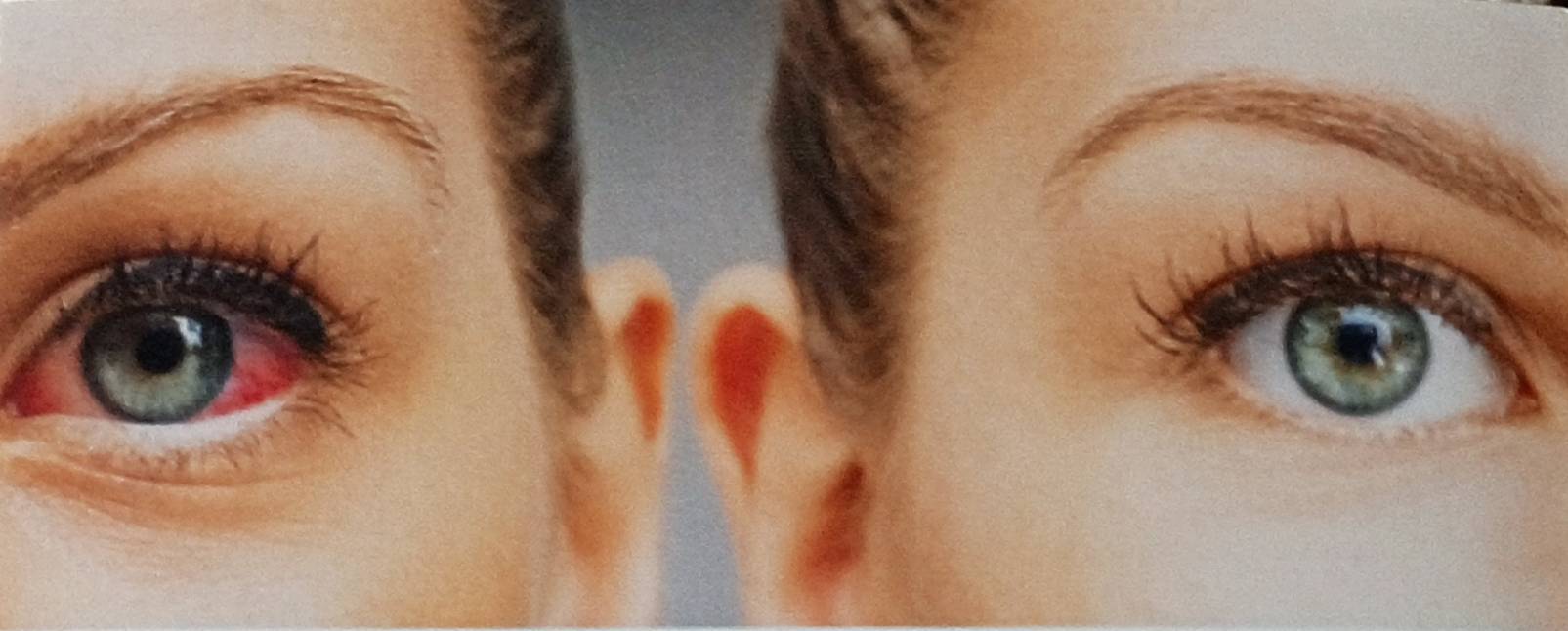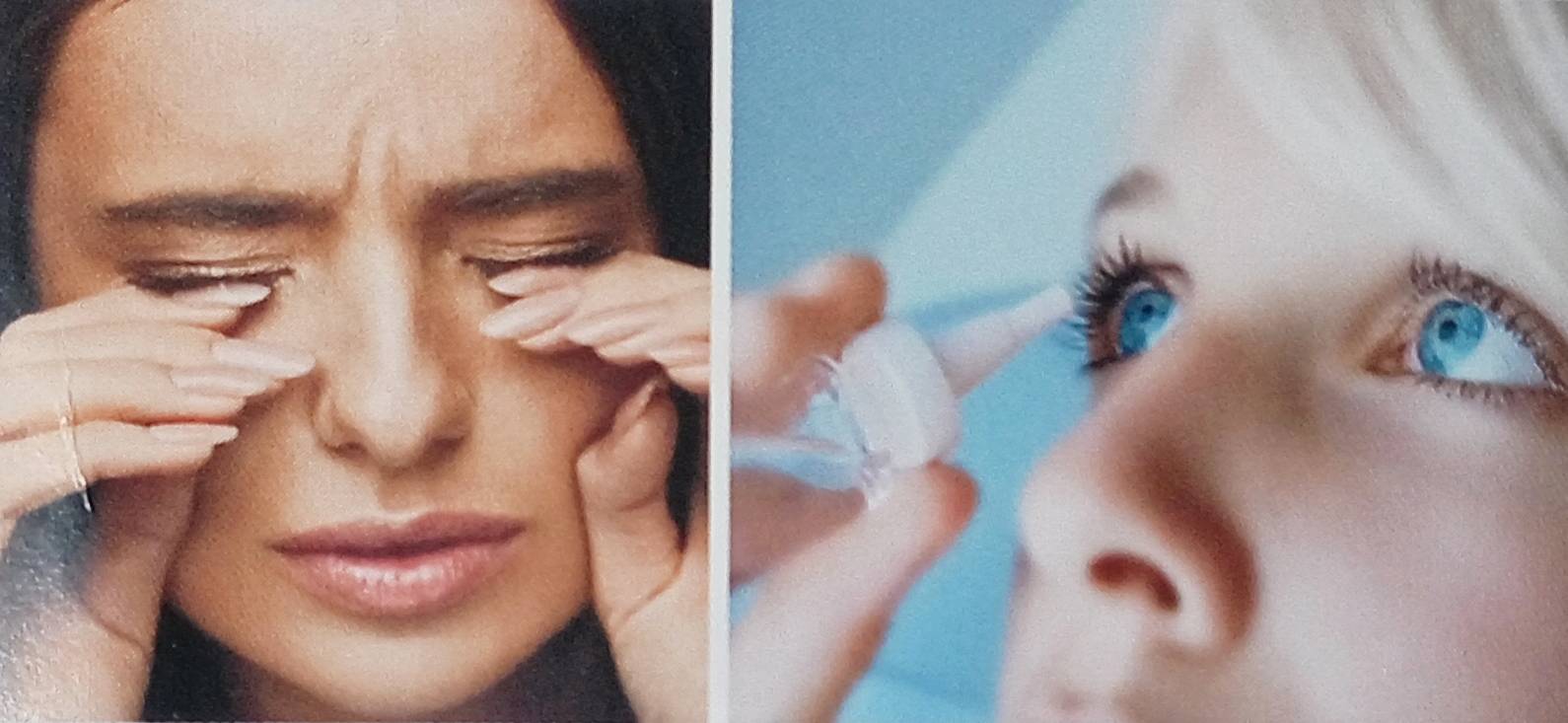Dry Eyes
Dry Eyes
What is Dry Eye?

Why are Tears Important?

Why do the Eyes feel Dry?
The layer of tear film on the eye is constantly thinning & evaporating. Normally this process, known as tear film break up, isn't a problem. New tears are continuously being produced to maintain the tear film. When a person blinks, it is just the body's automatic reflex to spread the new tear film across the eyes.
Problems arise when the quantity or quality of the tear film changes. If an insufficient amount of tear are produced, there are dry spots which develop on the surface of the eye. These dry spots start making the eye uncomfortable.
Why is it important to treat Dry Eye?
Dry eye can make it more difficult to perform some activities such as using a computer or reading for an extended period of time & it can decrease tolerance for dry environments such as sitting in an air conditioned room or an airplane for a long time. It can also make the person more uncomfortable in dry hot climates.
In addition inflammation of the surface of the eye may occur along with dry eye. If left untreated this condition can lead to pain, ulcer or scars on the cornea & some loss of vision. However permanent loss of vision from dry eye is uncommon. Dry eye can also compromise results of cataract & refractive surgery.
What are the Symptoms of Dry Eye?

- Stinging or burning sensation.
- A sandy or gritty feeling as if something is in the eye.
- Episodes of excess tears following very dry eye periods.
- A stringy discharge from the eye
- Pain & Redness of the eye.
- Episodes of blurred vision.
- Heavy eyelids.
- Inability to cry when emotionally stressed.
- Uncomfortable with contact lenses.
- Deacreased tolerance to reading, working on the computer, or any activity that requires sustained visual attention.
- Eye fatigue.
What are the Causes & Risk factors for Dry Eye?

Dry eye can be a temporary or chronic condition.
- It can be a side effects of certain medications, including antihistamines, nasal decongestants, Parkinson's medicines, birth control pills and tranquillizers, certain blood pressure medicines, antidepressants.
- Skin disease on or around the eyelids.
- Disease of the glands in the eyelids, such as melbomian gland dysfunction.
- Dry eye can occur in women who are pregnant.
- Women who are on hormone replacement therapy.
- Dry eye can also develop after a refractive (LASIK) & Cataract Surgery. These symptoms generally last three to six months, but may last longer in some cases.
- Allergies are usually associated with dry eye.
- Infrequent blinking, associated with staring at computer or video screens, coupled with long hours in A/C environment.
- Both excessive and insufficient dosages of vitamins.
- Long term contact lens wear.
- Dry eye can be associated with auto immune disorders such as Sjogren's syndrome, lupus and rheumatoid arthritis.
- Chronic inflammation of the conjunctiva, the membrane lining the eyelid and covering the front part of the eye, or the lacrimal gland. Chronic conjunctivitis can be caused by certain eye disease, infections, exposure to irritants such as chemical fumes and tobacco smoke, or drafts from air conditioning or heating.
- If the surface area of the eye is increased, as in thyroid disease when the eye protrudes forward or after cosmetic surgery if the eyelids are opened too widely.
- Dry eye may occur from exposure keratitis, in which the eyelids do not close completely during sleep.
What is the treatment of Dry Eye?
Although the condition is not curable the symptoms of the dry eye can improve with treatment.
- The primary treatment is instillation of artificial tears at variable intervals depending upon the severity of dry eye. Artificial tears are available in the form of eye drops, gels & ointments for night use.
- Lubricants: The lubricating eye drops provide relief from the symptoms & are an important replacement of naturally produced tears. Artificial tears are now available in preservative free formulations which are less toxic to the ocular surface & can be used more frequently & safely.
- Immunomodulators: Cyclosporine, an anti inflammatory medication has been shown to have clinical benefits in the treatment of dry eye. It decreases the corneal damage & improves the quality of tears thereby reducing symptoms of dry eye. Similarly Chloroquine phosphate has also shown similar benefits. Both these medications are available as eye drops which need to be instilled twice a day along with the lubricants for 3 to 6 months to show beneficial effects. In some cases of severe dry eye, short term use of corticosteroid eye drops that decrease inflammation is required.
- Punctal Plug: These plugs are inserted into the puncturn (drainage holes at the inner corner of the eyelids) and they help by allowing the natural tears to remain longer in contact with the eye out quickly through the punctum. This keeps the limited volume of tears on the eye for a longer time thereby decreasing symptoms of dry eye. These plugs are not felt. They are made of silicone or collagen. They are available in temporary (reversible) or permanent forms.
- Supplements: Some studies also show a beneficial effects of dietary supplements such as Omega 3 fatty acids & Vitamin D in decreasing symptoms of dryness.
Treating eyelid conditions like inflammation or infection of eyelid margin also benefit the individual.
What can you do to aid the treatment?
- Use medicines regularly as prescribed.
- Wear glasses or sunglasses that fit close to the face or that have side shields. This can help to slow tear evaporation from the eye surfaces.
- Avoid direct blast of air from A.C. or fan on to the eyes. Likewise while travelling.
- Indoors, use an air cleaner to filter dust & other particles.
- A humidifier in the room also helps by adding moisture to the air.
- Increasing the blink frequency also helps the tear film to spread evenly thus decreasing discomfort associated with computer reading.
- Allow the eye to rest when performing activities (that require the eye to be used for extended periods) like computers & gadgets & screen. Instil lubrication eye drops while performing these tasks.
Dry eye is a very common ocular condition that has a high impact on quality of life of affected individual owning to discomfort. However with the newer medications like preservative free artificial tear substitutes & additive treatment have opened up new horizons in treatment of dry eye thereby helping millions of people suffering from this debilitating condition.
